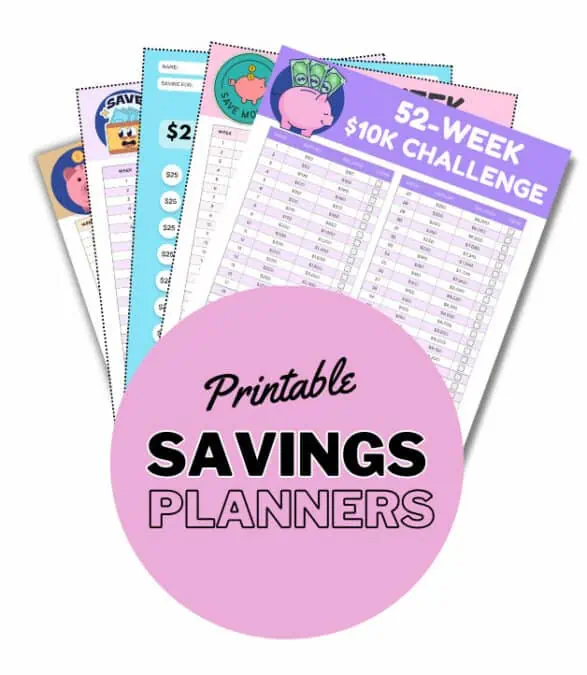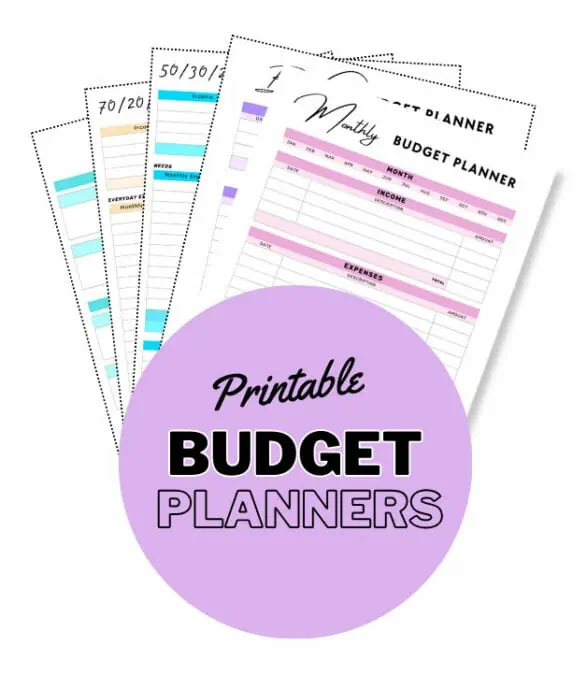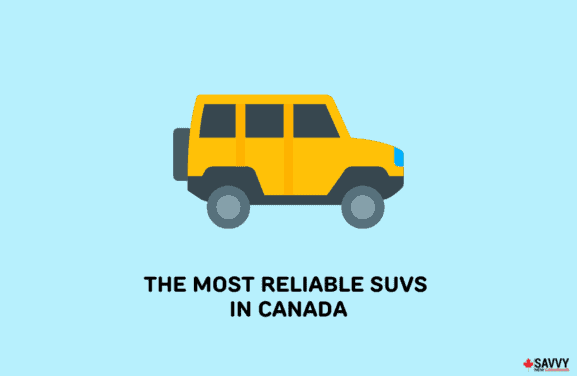Key Takeaways
- To reach your monthly savings goals, consider a budgeting rule like the 50-30-20 strategy and use automated transfers tailored to your annual targets. This rule suggests you save 20% of your paycheque each month.
- Save for key goals like retirement, home, emergency fund, vacation, and education.
- Target one year’s worth of income in your 30s while aiming for three times that in your 40s.
- Options for short-term savings include savings accounts, GICs, and bonds, while long-term savings can be placed in RRSPs, RESPs, RDSPs, and TFSAs.
One of the key principles of personal finance is saving money for the future. However, figuring out how much to save each month can be tricky, especially if you’re unsure where to begin.
The amount you should save each month will depend on your goals. People often save for things like an emergency fund, a down payment on a house or car, a planned vacation, and even retirement.
How Much You Should Save Per Paycheque
The amount you should save each month depends on your financial goals and how much money you have left over after paying your bills and living expenses.
You may have heard of the “50-30-20 rule,” which suggests allocating 50% of your take-home pay to necessary expenses, 30% to things you want, and 20% to savings. This popular method recommends saving at least 20% of your monthly paycheque.
This is a recommendation. Broadly speaking, you should save anywhere between 10-20% of your income annually. The higher, the better. If you want to retire early, consider saving much more.
Instead of a set percentage, you can also set up a system where you contribute to savings based on your annual goal rather than a set amount per month. Or, you can set up a recurring payment to transfer money from each paycheck to your savings account as you’re paid, treating it as another expense.
No matter how you choose to save, it’s important to start early to take advantage of compound growth and reach your financial goals.
Improve Finances This Year (Save up to $10,000 Easily)!
Finding it challenging to build an emergency fund and grow your savings? These savings planners make it easy. Pick a challenge and a financial goal, and start putting money aside on a schedule. These planners make it easy to track your progress and stay accountable. From saving $200, $500, $1,000, $2,000, $5,000, and even $10,000, you will see real progress if you get started!
Here’s what you get:
- 13 beautiful printables, including:
- Five 100-day challenges (various amounts)
- Savings trackers
- 26- and 52-week challenges (various amounts)
- 30-day savings planners
- Sample templates
Visit our shop to get your copies.

What You Should Save Money For
Understanding what to save for is as important as determining how much to save. Consider various saving goals, each serving a unique purpose:
Retirement: When it comes to retirement savings, a Registered Retirement Savings Plan (RRSP) is a popular choice for most Canadians. It works like tax magic, letting you deduct your contributions from your yearly income, reducing the tax you pay now.
Home: In Canada, there’s a new tax-advantaged way to save money for your first home called a Tax-Free First Home Savings Account (FHSA). With this account, you can save up to $8,000 every year, reaching a total of $40,000. The great part is that your money grows tax-free.
Emergency Fund: Shield yourself from unexpected financial storms by building a safety net. It’s a good idea to save money equal to what you usually spend in 3 to 6 months. You can also target saving 3 to 6 months’ worth of your income.
Vacation: Allocate funds for memorable getaways, ensuring a healthy work-life balance.To save for a vacation in Canada, plan ahead and budget for accommodation, transportation, food, and activities. Seek deals and discounts, and consider off-peak travel for budget-friendly options.
Education: Start saving early for your child’s education to give them more career options later on. Consider opening an RESP to get free government grants (CESGs) that accelerate the savings for your kid’s post-secondary education.
How Much Should I Have in Savings At 30 or 40?
Instead of aiming for a fixed savings amount like $1 million, consider your retirement needs based on your current lifestyle. Typically, you might need 70% of your working life income to maintain a similar standard of living in retirement.
- In your 30s, amidst family, home, and career considerations, aim to have one year’s worth of employment income as emergency savings or part of your investments. Then increase it to two years’ worth by age 35. Regardless, saving as little as $250 a month can significantly benefit your investments over time, providing a head start for retirement.
- In your 40s, with an established career and accustomed lifestyle, it’s time to prioritize your future retirement needs. Aim to have three times your now substantial employment income saved by age 40 and increase it to four times by age 45, aligning with your retirement goals. This proactive approach ensures a financial foundation that supports your desired lifestyle during retirement.
- For ages 45 to 65, here is a savings guide by age you can use to estimate how much you need.
Where You Should Put Your Savings Each Month
Once you’ve determined how much to save, the next step is deciding where to put your savings.
How much time you have to reach your goals can change how you decide to save and invest.
If you’re saving for something important soon, like an emergency fund or a big purchase, you should focus on keeping your money safe and easy to get to. Examples of these are:
- Savings Accounts
- Short-term Deposits and Guaranteed Investment Certificates (GICs)
For longer term savings and investing, your choices include:
- Exchange-Traded Funds
- Individual stocks
- Bonds
- Mutual funds
- You can hold any of these assets in registered accounts like Registered Retirement Savings Plans (RRSPs), Tax-Free Savings Accounts (TFSAs), Registered Education Savings Plans (RESPs), and non-registered investment accounts.
How to Save More Each Month
Saving more each month requires a strategic approach and disciplined financial habits.
Consider the following tips and tricks:
Obtain It from the Government
- Use tax refund money to increase your savings.
- Make sure your property tax assessment is fair; if not, apply for a reassessment.
- If you’re self-employed, consult a professional accountant to find ways to save on taxes.
Source It from Work
- When you get a raise, save the extra money instead of spending it.
- If you receive a work bonus, put that money into savings.
- Consider working overtime and saving the extra money you earn.
- For jobs with commissions, save a part of any large commission checks.
Cut Unnecessary Expenses and Save That Money
- Consider cutting back on spending on hobbies to save money.
- Review your credit card statements to find areas where you can spend less.
- Paying with cash instead of credit cards can save you money.
Review Your Debt Payments
- Compare the interest rates on your debts to find better options.
- Negotiate lower interest rates with your bank or explore other options.
- Seek professional advice if you’re struggling to make the minimum payments.
Monitor and set up a Spending Plan
- Track your spending for a month to understand where your money goes.
- Create a spending plan to set reasonable limits and stick to it.
- Budgeting is a simple yet effective way to control spending.
These strategies, among others, form a treasure trove of opportunities to boost your monthly savings. To stay on track with your plans, consider using a budgeting template like the ones below.
Become a Budgeter and Improve Your Finances
Living paycheck to paycheck? Use these printable budget planners to get your finances back on track. They will help you understand how your income is spent and make it easier to allocate funds to pay off debt, save, and invest. These planners take the chore out of budgeting and make it so much fun!
Here’s what you get:
- 7 beautiful printables, including:
- Bi-weekly and monthly budget planners
- Financial goals trackers
- Debt snowball tracker
- 70/20/10 budget planner
- 50/30/20 budget planner
- Financial habits tracker
- Sample templates
Visit our shop to get your copies.

FAQ’s
It depends on your financial goals and what’s left after bills. The “50-30-20 rule” may not apply; consider automated transfers based on annual targets.
Save for retirement with RRSPs, use FHSA for a tax-free first home fund, build an emergency fund using your TFSA, allocate money for vacations, and start early on education savings with RESPs.
Aim for one year’s worth of income in your 30s and three times by 40 for a comfortable retirement. Starting with a few hundred dollars monthly can greatly increase your investment portfolio over time.
Related:



